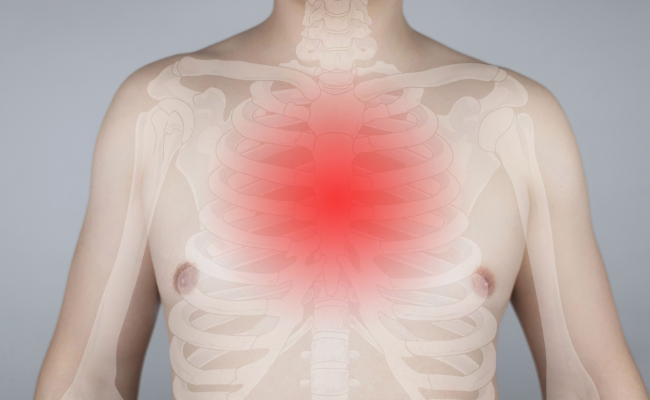How to Treat Osteomalacia?
- November 10, 2023
- No Comments

What is Osteomalacia?
Osteomalacia, distinguished by the softening and weakening of bones, is a pivotal aspect of bone health rooted in inadequate mineralization of the bone matrix. In contrast to osteoporosis, which involves a decline in bone density, osteomalacia focuses on a flaw in the mineralization process, rendering bones soft, weak, and susceptible to fractures and deformities. Vitamin D and phosphorus emerge as essential players in this process, crucial elements for the proper formation and maintenance of bones.
Referred to as "soft bones," osteomalacia denotes a condition characterized by bone weakening, elevating the risk of fractures. This disorder manifests as diminished mineralization, causing bone breakdown to outpace its reformation. While osteomalacia predominantly affects adults, insufficient vitamin D levels in children may lead to rickets. The core of osteomalacia lies in the compromised ability of bones to uphold their structural integrity, underscoring the significance of timely diagnosis and appropriate intervention to avert further complications.
Why Does Osteomalacia Occur?
The primary culprit behind osteomalacia is a deficiency in vitamin D, phosphorus, or both. Vitamin D, often referred to as the "sunshine vitamin," plays a pivotal role in calcium absorption and bone mineralization. Therefore, a lack of exposure to sunlight, a primary source of vitamin D, or the body's inability to effectively metabolize this vitamin can contribute to osteomalacia. Conditions such as celiac disease, renal disorders, and liver diseases can interfere with the absorption and metabolism of vitamin D and phosphorus, further exacerbating the risk of osteomalacia. Additionally, inadequate dietary intake of these essential nutrients can be a contributing factor.
How is Osteomalacia Diagnosed and Staged?
The diagnosis of osteomalacia involves a comprehensive approach that includes a thorough medical history assessment, physical examination, blood tests, and imaging studies. Blood tests often reveal low levels of vitamin D, phosphorus, or calcium, providing valuable insights into the deficiency. Imaging studies, such as X-rays or bone scans, help identify characteristic bone abnormalities associated with osteomalacia. Unlike some other bone disorders, osteomalacia is not commonly staged, as it is generally considered a reversible disorder with appropriate treatment.
Treatment Solutions for Osteomalacia:
- Vitamin D Supplementation: The foundation of osteomalacia treatment lies in the administration of vitamin D supplements. These supplements are instrumental in addressing the underlying deficiency and promoting the proper mineralization of the bone matrix. The specific dosage and type of vitamin D supplement prescribed may vary based on the severity of the deficiency and the individual's response to treatment.
- Phosphorus Supplementation: In cases where phosphorus levels are also deficient, phosphorus supplements become a valuable component of the treatment plan. Phosphorus is crucial for the mineralization of bone, and supplementation complements the effects of vitamin D in promoting bone health.
- Sunlight Exposure: Adequate exposure to sunlight is an integral aspect of osteomalacia treatment. The ultraviolet rays from the sun stimulate the production of vitamin D in the skin, contributing to the correction of the deficiency. Patients are encouraged to spend time outdoors during periods when sunlight is most conducive to vitamin D synthesis. However, caution is advised to prevent overexposure and sunburn.
- Dietary Changes: A well-balanced diet is crucial for managing osteomalacia. Foods rich in vitamin D, such as fatty fish, fortified dairy products, eggs, and certain cereals, should be incorporated. Similarly, phosphorus-rich foods like meat, dairy products, and nuts play a vital role in supporting bone health.
- Underlying Condition Management: Osteomalacia can be secondary to an underlying medical condition, such as celiac disease, renal disorders, or liver diseases. Effectively managing and treating the root cause is essential for successful treatment. This may involve medications, dietary modifications, or other specific interventions tailored to the underlying condition.
Benefit Points of Osteomalacia Treatment:
- Improved Bone Health: The primary goal of osteomalacia treatment is the restoration of proper bone health. Successful treatment ensures the correct mineralization of the bone matrix, reducing the risk of fractures, deformities, and related complications associated with weakened bones.
- Reduced Pain and Discomfort: As bone health improves, individuals with osteomalacia often experience a notable reduction in bone pain and discomfort. This contributes to an overall enhancement in the quality of life, allowing individuals to engage in daily activities with greater ease.
- Prevention of Long-Term Complications: Timely and appropriate treatment of osteomalacia is instrumental in preventing the development of long-term complications. This includes severe bone deformities and fractures, which can significantly impact mobility and overall well-being.
- Enhanced Nutritional Awareness: Managing osteomalacia necessitates a heightened focus on nutrition. This involves not only supplementation but also the adoption of a well-rounded diet that ensures an adequate intake of vitamin D and phosphorus. This holistic approach fosters enhanced nutritional awareness, promoting overall health and well-being.
Comments (0)